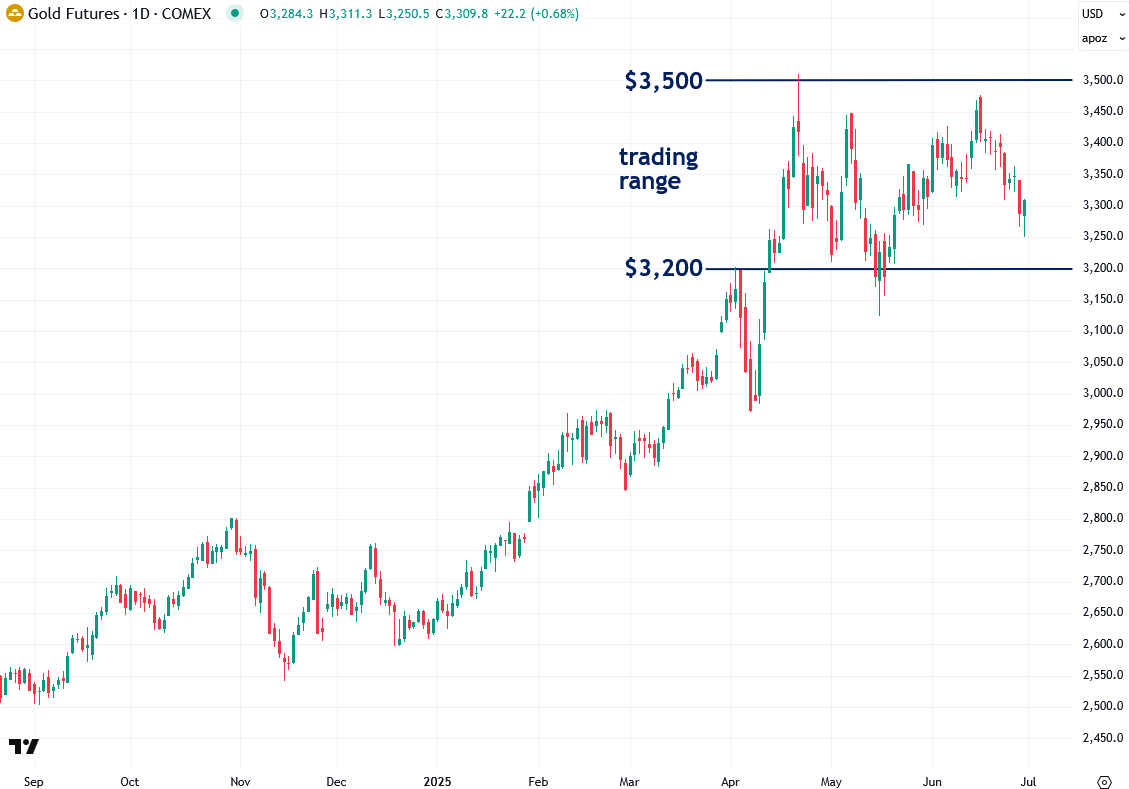Gold Priced in Major Currencies Reveals Clear Consolidation
Like last summer, gold is moving sideways as it works off its overbought condition following strong spring gains. There are many parallels between then and now—an encouraging sign.
In this article, I want to share an update on where gold stands when priced in multiple major currencies—a valuable perspective that offers deeper insight into its current position and likely next moves. While this methodology is relatively simple, it’s remarkably powerful and often overlooked by most analysts. In fact, it has become something of a trademark approach for me and for this newsletter.
One striking example of its effectiveness was last summer, when I explained (click here to read it) that gold was merely consolidating during the quiet, low-volume summer months. I predicted that once summer ended and trading volume returned, gold would break out sharply and extend its spring rally—and that’s exactly what happened. This summer, I’m seeing many similar parallels, which I’ll detail in this piece. So, let’s dive in.
Let’s begin with COMEX gold futures, which I find more insightful for analysis than the spot price—mainly because $100 increments in COMEX gold often act as key psychological support and resistance levels. After briefly dipping below the $3,300 support level on Friday, gold has rebounded today—a positive sign, as I would ideally like to see it continue holding above that level.
In the chart below, I’ve removed all support and resistance levels except for the most important ones right now: $3,200 and $3,500. These mark the lower and upper bounds of the trading range that gold has been confined to over the past few months.
I view this as a healthy consolidation phase—gold is simply catching its breath after the strong gains it has posted over the past year. It’s perfectly normal for markets, including gold and silver, to quiet down during the summer months. Trading volume tends to decline, and news flow slows as many financial professionals head off on vacation (some even summering in the Hamptons if they're from Wall Street!).
Additionally, geopolitical fears have subsided somewhat in recent weeks after the U.S. and Israel struck various targets within Iran, which has taken some immediate pressure off gold. However, the ever-growing U.S. national debt—which just hit a record $37 trillion—and a weakening dollar continue to provide strong underlying support for gold prices, as I’ll discuss shortly.
Back on April 22nd, I published an update titled “Did Gold Just Peak?” Several factors led me to raise that question, including gold’s rejection of the key $3,500 level on that day and the formation of a spinning top candlestick—a classic signal of market hesitation or a potential pause. In addition, gold was quite overbought and stretched to the upside, as indicated by various technical measures, including the Relative Strength Index (RSI). The RSI, a widely used momentum oscillator, helps determine whether an asset is overbought, oversold, or in a neutral state, and it clearly showed that gold was due for a breather.





